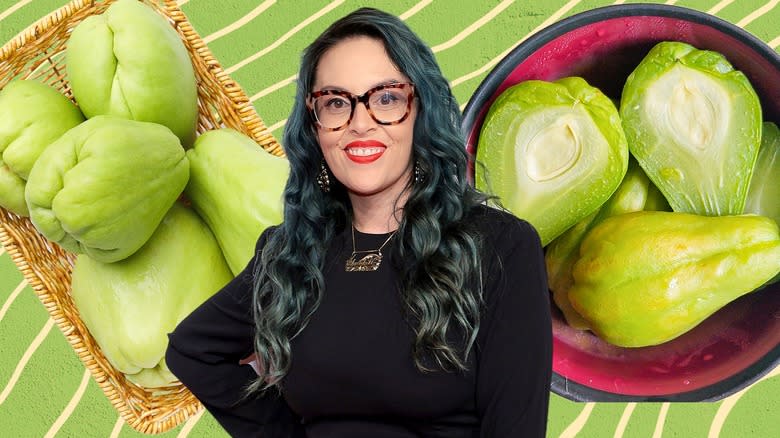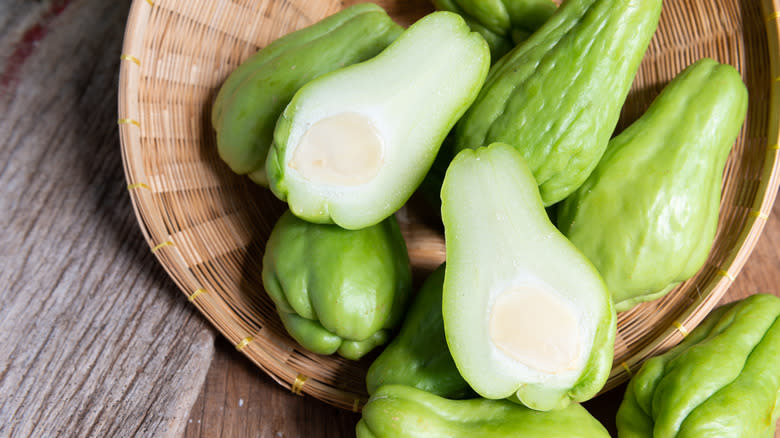Claudette Zepeda On Why You Should Be Cooking With Chayote This Summer - Exclusive

We can't get enough of summer squashes like zucchini and pattypan. Not only do they come in a variety of stunning colors and sizes, but they're also so versatile you can make anything with them from stir fry to quick breads. While you probably recognize the dark green and yellow squashes, you might have noticed another squash tucked next to these classics that you may not know as well but is just as adaptable: the chayote.
A Mexican squash also known as a vegetable pear, gayota, or papa del aire, this light green, squash has become increasingly popular in the United States. Commonly used in Latin America and Asia for soups and salads, this small, pear-shaped gourd has a mild flavor making it the perfect choice for many recipes. As a matter of fact, Claudette Zepeda told us at L.A.'s inaugural Wine & Food Festival that she often uses it as a substitute for corn in her esquites because it has a subtle sweetness and the "same little water bursts of corn."
"Chayotes is the best," Zepeda tells us. And we can see why. Zepeda doesn't just use it in her esquites. Turns out she uses the chayote in several different ways and was nice enough to share a few with us.
Read more: Ina Garten's 12 Best Cleaning Tips For A Mess-Free Kitchen
Zepeda Enjoys Chayote Both Raw And Cooked

Unlike other squashes whose flesh is the only edible part, every single part of the chayote, including its skin, and even the seed, is edible. But that's not the only reason it's such a popular gourd. Zepeda says it adds "a really good textural component" to any dish in which it's used. But what's really interesting about the chayote is that it changes its flavor depending on how it's used.
"It tastes like water when it's raw," Zepeda explains which is why she says she frequently adds it to salads. But where some chefs will chop or slice up the squash, Zepeda says she shaves it "really, really thin" and tosses it together with some raw fennel and beets. Then when it's cooked, the squash takes on the flavors of whatever it's cooked with, which is why you often find it in stir fries, soups, and stews.
While you could add it to any of your favorite soups, there's one specific stew that Zepeda uses it in frequently: caldo de res. She says she's been eating the squash in this Mexican delicacy since she was a child. "Every chicken soup and beef soup always had chayotes in it," she says. "You can't make caldo without chayotes. So, that's how I'm using it."
Read the original article on Tasting Table

 Yahoo Lifestyle
Yahoo Lifestyle 
